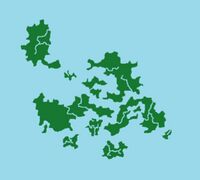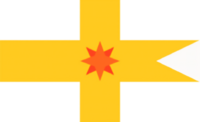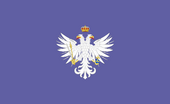Fort Viorlia: Difference between revisions
Lumoviorlia (talk | contribs) No edit summary |
Lumoviorlia (talk | contribs) No edit summary |
||
| Line 9: | Line 9: | ||
|englishmotto = ''Our Land, Fort Viorlia, is Glorious Indeed'' | |englishmotto = ''Our Land, Fort Viorlia, is Glorious Indeed'' | ||
|national_anthem = ''The Defining of Grace'' | |national_anthem = ''The Defining of Grace'' | ||
|image_map = [[File: | |image_map = [[File:VioMap.jpeg|200px]] | ||
|map_caption = | |map_caption = A geological map of the 20 islands of Viorlia | ||
|largest_city = capital | |largest_city = capital | ||
|official_languages = English | |official_languages = English | ||
| Line 61: | Line 61: | ||
|government_type = Constitutional Republic | |government_type = Constitutional Republic | ||
|leader_title1 = Prime Minister | |leader_title1 = Prime Minister | ||
|leader_name1 = | |leader_name1 = Jennifer Boarton | ||
|leader_title2 = Vice Minister | |leader_title2 = Vice Minister | ||
|leader_name2 = | |leader_name2 = John Lexington | ||
|leader_title3= Speaker of the House | |leader_title3= Speaker of the House | ||
|leader_name3 = | |leader_name3 = Davidson J. Hunter | ||
|leader_title4= Chief Justice | |leader_title4= Chief Justice | ||
|leader_name4 = Jason Micheal | |leader_name4 = Jason Micheal | ||
|legislature = Council | |legislature = Council | ||
|upper_house = Council of the | |upper_house = Council of the Republic | ||
|lower_house = Chamber of Deputies | |lower_house = Chamber of Deputies | ||
|sovereignty_type = Fully Independent | |sovereignty_type = Fully Independent | ||
|area_rank = | |area_rank = 60 | ||
|area_km2 = 349,013<!--Major area size (in square km)--> | |||
|area_km2 = <!--Major area size (in square km)--> | |area_sq_mi = 134,755<!--Area in square mi (requires area_km2)--> | ||
|area_sq_mi = <!--Area in square mi (requires area_km2)--> | |||
|area_footnote = <!--Optional footnote for area--> | |area_footnote = <!--Optional footnote for area--> | ||
|percent_water = | |percent_water = | ||
| Line 81: | Line 80: | ||
|area_label2 = <!--Label below area_label (optional)--> | |area_label2 = <!--Label below area_label (optional)--> | ||
|area_data2 = <!--Text after area_label2 (optional)--> | |area_data2 = <!--Text after area_label2 (optional)--> | ||
|population_estimate = | |population_estimate = 55,000,000 | ||
|population_estimate_rank = | |population_estimate_rank = 26 | ||
|population_estimate_year = | |population_estimate_year = 2017 | ||
|population_census = | |population_census = | ||
|population_census_year = | |population_census_year = | ||
|population_density_km2 = | |population_density_km2 = 115 | ||
|population_density_sq_mi = | |population_density_sq_mi = 300 | ||
|population_density_rank = | |population_density_rank = 106 | ||
|nummembers = <!--An alternative to population for micronation--> | |nummembers = <!--An alternative to population for micronation--> | ||
|GDP_PPP = <!--(Gross Domestic Product from Purchasing Power Parity)--> | |GDP_PPP = <!--(Gross Domestic Product from Purchasing Power Parity)--> | ||
| Line 95: | Line 94: | ||
|GDP_PPP_per_capita = | |GDP_PPP_per_capita = | ||
|GDP_PPP_per_capita_rank = | |GDP_PPP_per_capita_rank = | ||
|GDP_nominal = | |GDP_nominal = ~ 1.3 trillion CAD (945 billion USD) | ||
|GDP_nominal_rank = | |GDP_nominal_rank = 19 | ||
|GDP_nominal_year = | |GDP_nominal_year = 2022 (United Nations) | ||
|GDP_nominal_per_capita = | |GDP_nominal_per_capita = 23,400 CAD (17,200 USD) | ||
|GDP_nominal_per_capita_rank = | |GDP_nominal_per_capita_rank = 40 | ||
|Gini = <!--(Gini measure of income inequality; input number only; valid values are between 0 and 100)--> | |Gini = <!--(Gini measure of income inequality; input number only; valid values are between 0 and 100)--> | ||
|Gini_ref = <!--(for any ref/s to associate with Gini number)--> | |Gini_ref = <!--(for any ref/s to associate with Gini number)--> | ||
| Line 105: | Line 104: | ||
|Gini_year = | |Gini_year = | ||
|HDI_year = <!-- Please use the year to which the data refers, not the publication year--> | |HDI_year = <!-- Please use the year to which the data refers, not the publication year--> | ||
|HDI = <!--(Human Development Index; input number only; valid values are between 0 and 1)--> | |HDI = 0.724<!--(Human Development Index; input number only; valid values are between 0 and 1)--> | ||
|HDI_change = <!--increase/decrease/steady; rank change from previous year--> | |HDI_change = decrease<!--increase/decrease/steady; rank change from previous year--> | ||
|HDI_rank = | |HDI_rank = 109 | ||
|HDI_ref = <!--(for any ref/s to associate with HDI number)--> | |HDI_ref = <!--(for any ref/s to associate with HDI number)--> | ||
|currency = <!--Name/s of currency/ies used in country/territory--> | |currency = Candian Dollar or Viorlian Creote<!--Name/s of currency/ies used in country/territory--> | ||
|currency_code = <!--ISO 4217 code/s for currency/ies (each usually three capital letters)--> | |currency_code = <!--ISO 4217 code/s for currency/ies (each usually three capital letters)--> | ||
|time_zone = <!--e.g. GMT, PST, AST, etc, etc (wikilinked if possible)--> | |time_zone = <!--e.g. GMT, PST, AST, etc, etc (wikilinked if possible)--> | ||
| Line 117: | Line 116: | ||
|DST_note = <!--Optional note regarding DST use--> | |DST_note = <!--Optional note regarding DST use--> | ||
|antipodes = <!--Place/s exactly on the opposite side of the world to country/territory--> | |antipodes = <!--Place/s exactly on the opposite side of the world to country/territory--> | ||
|date_format = | |date_format = mm/dd/yyyy | ||
|drives_on = <!--"right" or "left" (side of road)--> | |drives_on = left<!--"right" or "left" (side of road)--> | ||
|cctld = <!--Internet country code top-level domain identifier (e.g. [[.br]], [[.de]], etc)--> | |cctld = .fv<!--Internet country code top-level domain identifier (e.g. [[.br]], [[.de]], etc)--> | ||
|iso3166code = <!--Use to override default from common_name parameter above; omit using "omit".--> | |iso3166code = <!--Use to override default from common_name parameter above; omit using "omit".--> | ||
|calling_code = <!--e.g. [[+1]], [[+531]], [[+44]], etc--> | |calling_code = +693<!--e.g. [[+1]], [[+531]], [[+44]], etc--> | ||
|patron_saint = <!--Use patron_saints for multiple--> | |patron_saint = <!--Use patron_saints for multiple--> | ||
|image_map3 = <!--Optional third map position, e.g. for use with reference to footnotes below it--> | |image_map3 = <!--Optional third map position, e.g. for use with reference to footnotes below it--> | ||
| Line 131: | Line 130: | ||
|footnotes = <!--For any generic non-numbered footnotes--> | |footnotes = <!--For any generic non-numbered footnotes--> | ||
}} | }} | ||
<b>Fort Viorlia</b>, known formally as the <b>Constitutional Republic of Fort Viorlia</b>, and also known colloquially as <b>Viorlia</b>, is a independent, sovereign nation federation, comprising of 20 islands and 31 provinces. It is one of the fastest growing nations in the world, following the revolution of 1995, where the Democratic Republic of Fort Viorlia was overthrown and replaced by the current Constitutional Republic. | |||
In 2017, Fort Viorlia was said to have an estimated 55 million inhabitants, ranking 26th according to the [https://en.m.wikipedia.org/wiki/United_Nations United Nations]. | |||
==Etymology== | |||
The Viorlian river is one of the central settings in indigenous Viorlian mythology. It stretches across Methinia, eventually splitting into two, one branch running south-southwest and one south-southeast. | |||
===Mythological Context=== | |||
It is said that Yetrewe (the master god) made the earth by using water from rivers on heaven, and that he wanted to put some water from the holiest river in heaven on earth, and made it into the Viorlian river. | |||
While Viorlian mythology has very few remaining adherents, it is often referenced and compared to modern life. | |||
===Naming=== | |||
In 1887, when North Freachikion started to face civil unrest, and collapse became imminent, a group of aristocrats came together to form a new nation built on their society. They started drafting a constitution for this future nation, and in 1892, when North Freachikion collapsed, the new nation took over. However, it needed a name. A contest was held to see who could come up with the best name, and an overwhelming amount of indigenous participators answered ‘Viorlia’. The aristocrats, liking the name, and not knowing the meaning behind reason why almost every indigenous person chose Viorlia, affixed the word ‘Fort’ to the beginning of the name, and decided to name the country Fort Viorlia. | |||
Latest revision as of 03:06, 15 June 2024
The Constitutional Republic of Fort Viorlia Tu Linads lom Fort Viorlia | |
|---|---|
| Motto: Tu'Noris Lenads, Ceol Fort Viorlia Edi Our Land, Fort Viorlia, is Glorious Indeed | |
| Anthem: The Defining of Grace | |
 A geological map of the 20 islands of Viorlia | |
| Official languages | English |
| Recognised national languages | English |
| Recognised regional languages | English, French, Viscio |
| Ethnic groups (2017) | 83% Euro-American
12% Asian
|
| Religion (2017) | 87% Abrahamic
13% Other
|
| Demonym(s) | Viorlian |
| Government | Constitutional Republic |
• Prime Minister | Jennifer Boarton |
• Vice Minister | John Lexington |
• Speaker of the House | Davidson J. Hunter |
• Chief Justice | Jason Micheal |
| Legislature | Council |
| Council of the Republic | |
| Chamber of Deputies | |
| Fully Independent | |
| Area | |
• | 349,013 km2 (134,755 sq mi) (60) |
| Population | |
• 2017 estimate | 55,000,000 (26) |
• Density | 115/km2 (297.8/sq mi) (106) |
| GDP (nominal) | 2022 (United Nations) estimate |
• Total | ~ 1.3 trillion CAD (945 billion USD) (19) |
• Per capita | 23,400 CAD (17,200 USD) (40) |
| HDI | high (109) |
| Currency | Candian Dollar or Viorlian Creote |
| Date format | mm/dd/yyyy |
| Driving side | left |
| Calling code | +693 |
| Internet TLD | .fv |
Fort Viorlia, known formally as the Constitutional Republic of Fort Viorlia, and also known colloquially as Viorlia, is a independent, sovereign nation federation, comprising of 20 islands and 31 provinces. It is one of the fastest growing nations in the world, following the revolution of 1995, where the Democratic Republic of Fort Viorlia was overthrown and replaced by the current Constitutional Republic.
In 2017, Fort Viorlia was said to have an estimated 55 million inhabitants, ranking 26th according to the United Nations.
Etymology
The Viorlian river is one of the central settings in indigenous Viorlian mythology. It stretches across Methinia, eventually splitting into two, one branch running south-southwest and one south-southeast.
Mythological Context
It is said that Yetrewe (the master god) made the earth by using water from rivers on heaven, and that he wanted to put some water from the holiest river in heaven on earth, and made it into the Viorlian river.
While Viorlian mythology has very few remaining adherents, it is often referenced and compared to modern life.
Naming
In 1887, when North Freachikion started to face civil unrest, and collapse became imminent, a group of aristocrats came together to form a new nation built on their society. They started drafting a constitution for this future nation, and in 1892, when North Freachikion collapsed, the new nation took over. However, it needed a name. A contest was held to see who could come up with the best name, and an overwhelming amount of indigenous participators answered ‘Viorlia’. The aristocrats, liking the name, and not knowing the meaning behind reason why almost every indigenous person chose Viorlia, affixed the word ‘Fort’ to the beginning of the name, and decided to name the country Fort Viorlia.

